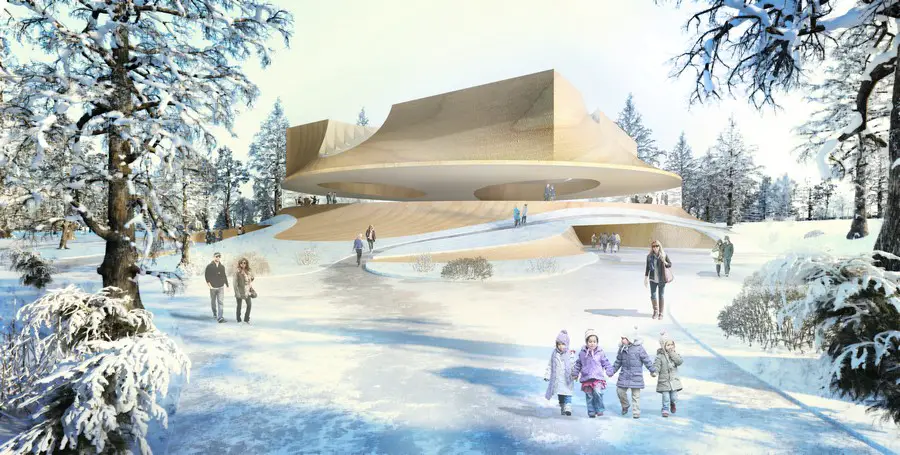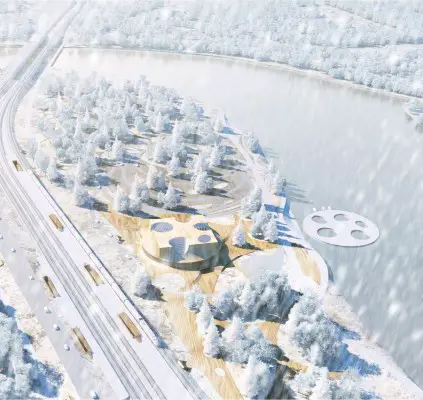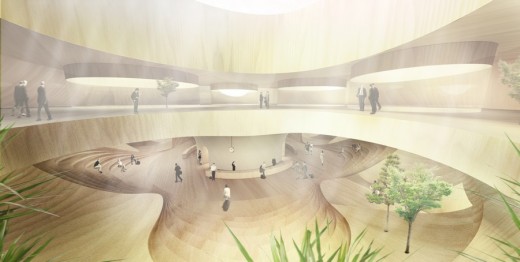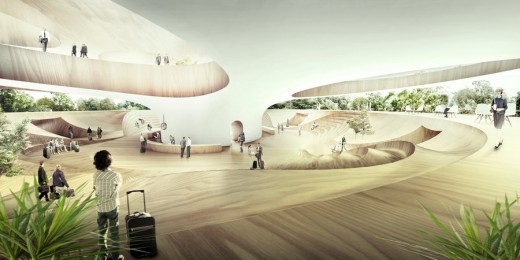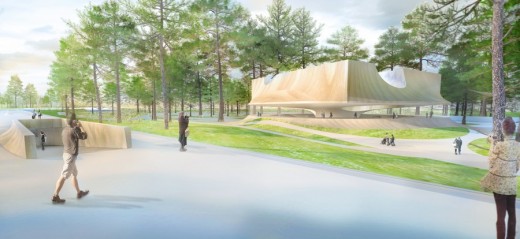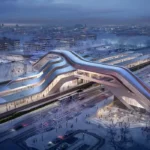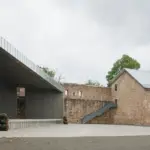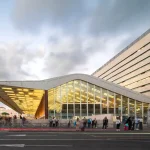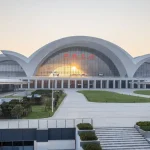Rail Baltic Parnu Passenger Terminal, Estonian architecture, Architect, Parnu building images
Rail Baltic Parnu Passenger Terminal
Estonian Train Station Building Proposal design by SPARK Architects
14 Jan 2015
Design: SPARK
Location: Parnu, Estonia
Rail Baltic Parnu Passenger Terminal
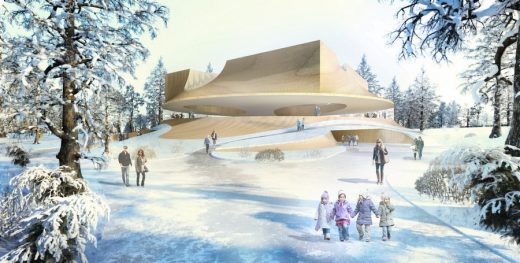
image courtesy of architects practice
Rail Baltic Parnu Passenger Terminal Building in Estonia
New Rail Baltic Parnu passenger terminal is located next to Parnu River, in the south part of Parnu town. The current site is considered to become a transportation hub for all public transports in the near future. In order to use the full potential of the site and its context, as well as to preserve nature, the new terminal building will be located in the south part of the competition area, next to the future Rail Baltic railroads.
The new location of the terminal building creates an imaginary axis of future connection between both river and overland transportation networks. Also, since the new terminal buildings is within walking distance from a drop-off area for the public transportation, it will also serve as a bus stop for city buses, as well as an drop off zone for private vehicles and public taxis. Therefore, the new location of terminal building will become the central junction for all transportation networks.
New Rail Baltic Parnu passenger terminal proposal has been designed to visualize a “seat” in the forest, a metaphysical space under the pine trees at the coast of the Baltic Sea. Inspired by the qualities of a piece of dressed wood, the piece of architecture tells a story about the tree itself, while the new terminal building compliments the contemporary architectural setting in order to establish a strong and reflexive relationship with nature and its intermediate surrounding environment.
Designed as a place for sustained dialogues within the natural context, spatial solution of terminal building intends to collect, translate and transform traditions of building techniques from surrounding urban context, in order to recreate the physical experience of being inside the woods.
The new terminal proposal has been designed as a 2 story building accommodating large scale public spaces on the ground level, while the station has been designed to serve personnel and employees’ offices, occupying the top level of the building. The spacious waiting room on the ground level is organized around the central core, with vertical connections between both levels. The design features extensive visual accessibility between levels, to create connections between the public space on ground level and public service space above it. In terms of function, the terminal’s spatial functionality is deeply rooted into the conceptual functionality as most of the technical rooms are placed on the top of the building to provide the best maintenance options.
The new terminal proposal has been designed taking full consideration into the potential of traditional sustainable materials available in the local markets, especially wood. The importance of wood within the designed building structure is based on the historical significance of wood within the Estonian culture as well as local craftsmen’s fine building techniques.
Oversized laminated wood beams combined with laminated wood columns would provide a general structural anatomy for the building, while the use of light-weight steel structures will shape the rest of it. The terminal building will have a strong concrete structural base integrated into the landscape relief.
As for landscape design, the design intends to highlight the natural environment as the overall competition site is located in a natural context and within the nature itself. The design intends to bend around the natural obstacles such as valuable tree resources as much as possible, creating public roads, service roads, parking lots, as well as a pedestrian road network based on the void spaces available around the trees, without seriously violating nature rights to destroy their original distribution. Most importantly, the landscape design provides countless opportunities for all seasons’ outdoor activities throughout the site.
Rail Baltic Parnu Passenger Terminal – Building Information
Master Plan and Architecture: SPARK
Project Director: Mingyin Tan
Team: (Project Architect) Uldis Sedlovs, Yuchen Zuo, Adrian Garcia
Client: (Competition entry – Rail Baltic Pärnu Passenger Terminal)
Rail Baltic Parnu Passenger Terminal in Estonia images / information from SPARK
Location: Parnu, Estonia, Baltic coast, eastern Europe
Estonia Architecture
Contemporary Estonian Architectural Projects, chronological:
Tartu Downtown Cultural Centre Architecture Competition News
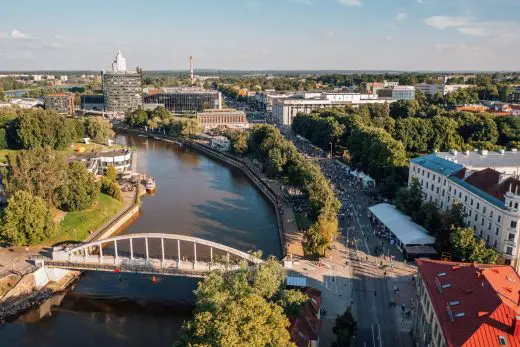
photo : Maanus Kullamaa
Tartu Downtown Cultural Centre Design Competition
KÄBI, Maidla village, Rapla county
Design: architects Mari Hunt and Arvi Anderson (b210)
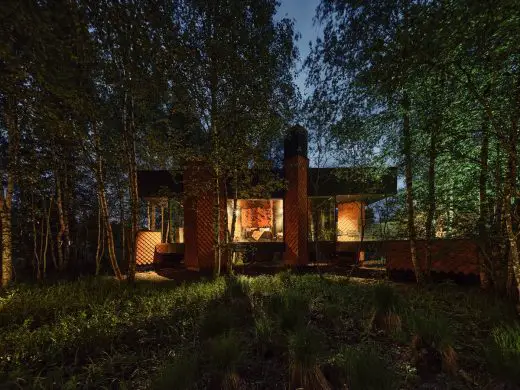
photo © Tõnu Tunnel
Maidla Nature Villa KÄBI
Kindergarten and Community Center in Tammiste, Tori Parish, Pärnu County, southwestern Estonia
Design: RMJM Milano Architects
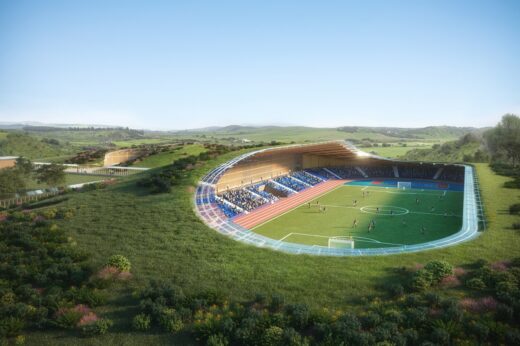
image courtesy of architects practice
Kindergarten and Community Center in Tammiste Building
The Rural Municipal Building in Saue, north-western Estonia
Design: molumba, Architects
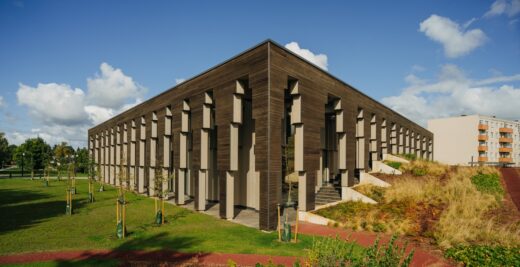
photo : Tõnu Tunnel
Rural Municipal Building in Saue
Port of Tallinn
Design: Salto Architects
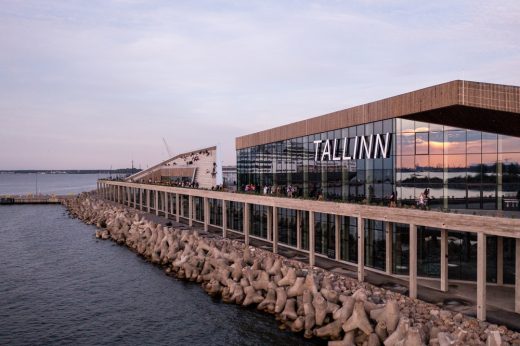
image courtesy of architects practice
Port of Tallinn Cruise Terminal
Kärdla City Pavilion, Kärdla, Dagö Island
Design: Bornstein Lyckefors Arkitekter
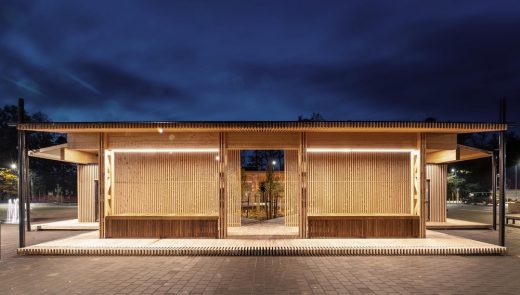
photo : Tiit Veermäe
Kärdla City Pavilion, Hiiumaa
Maidla Nature Villa, Maidla village, Rapla county
Design: b210 architects
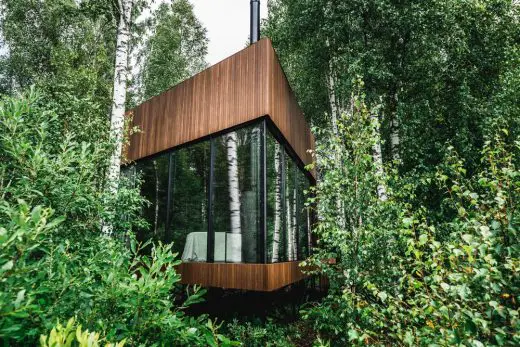
photo © Priidu Saart
Maidla Nature Villa
NO99 Straw Theatre in Tallinn
Salto AB OÜ, Estonia
Tallinn New Academy of Arts
Mikou Design Studio
New Estonian Architecture Exhibition
Comments / photos for the Rail Baltic Parnu Passenger Terminal in Estonia Building design by SPARK Architects page welcome

